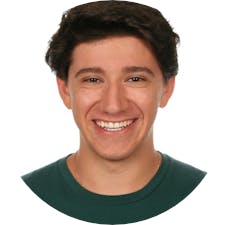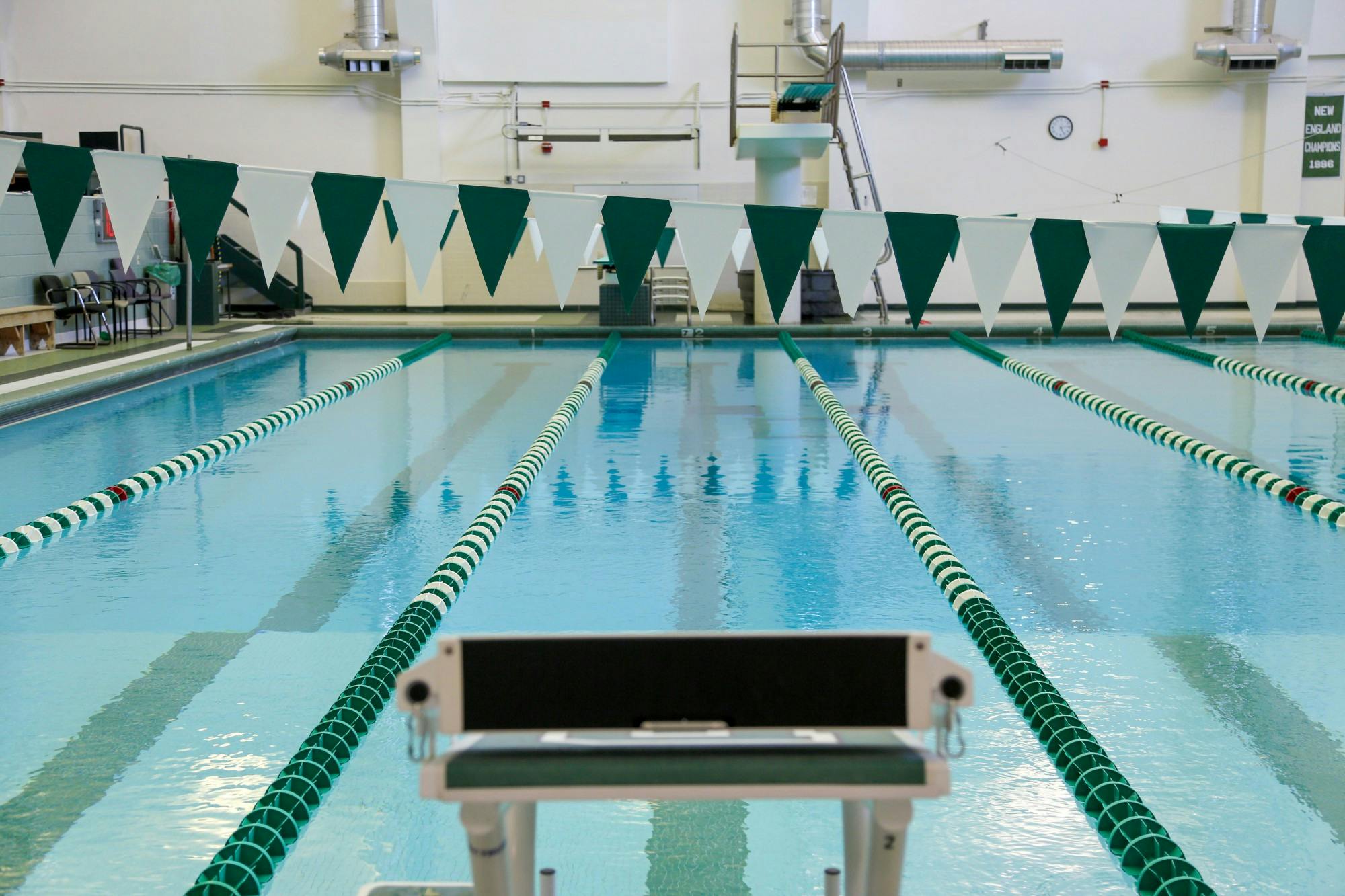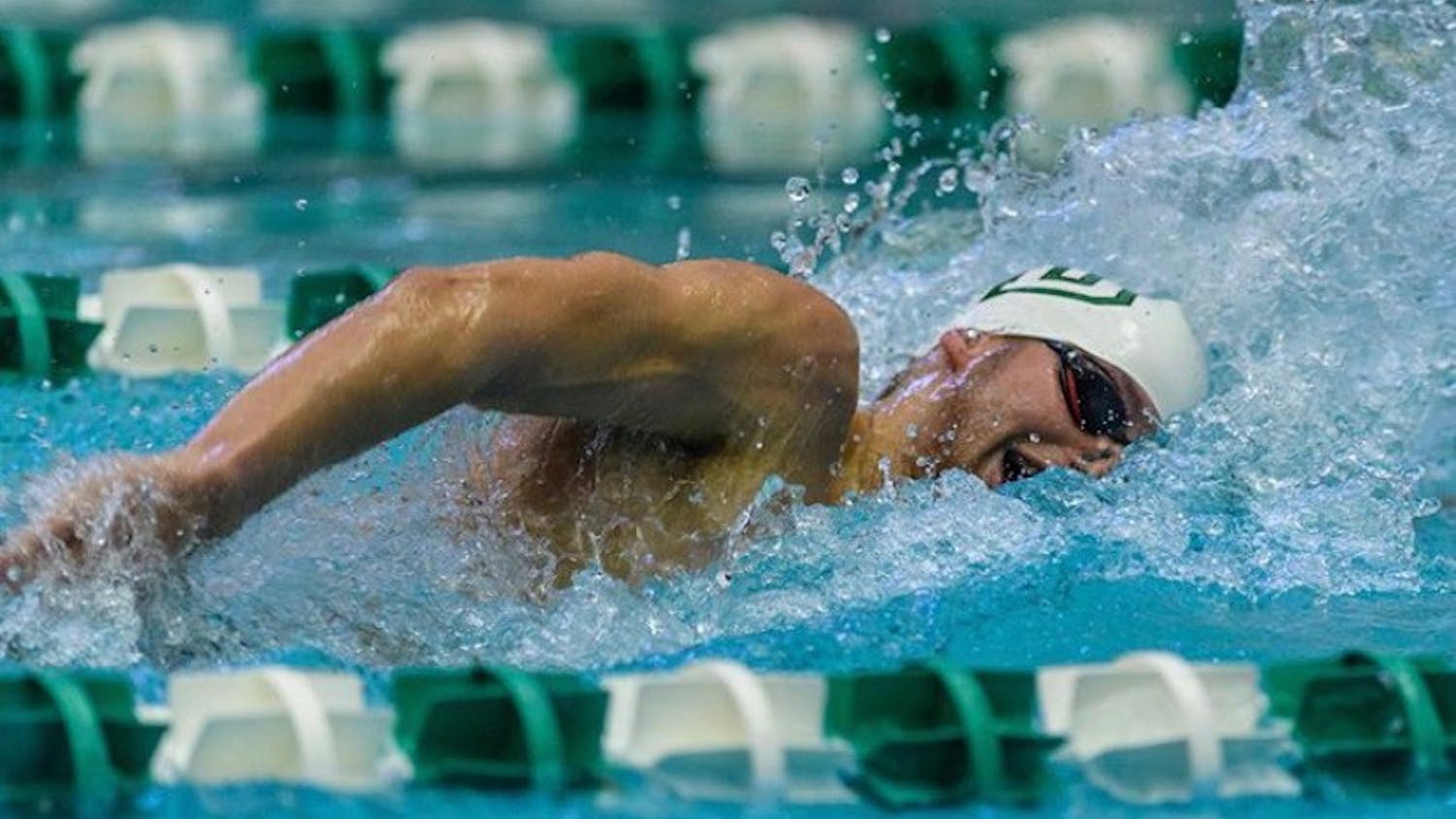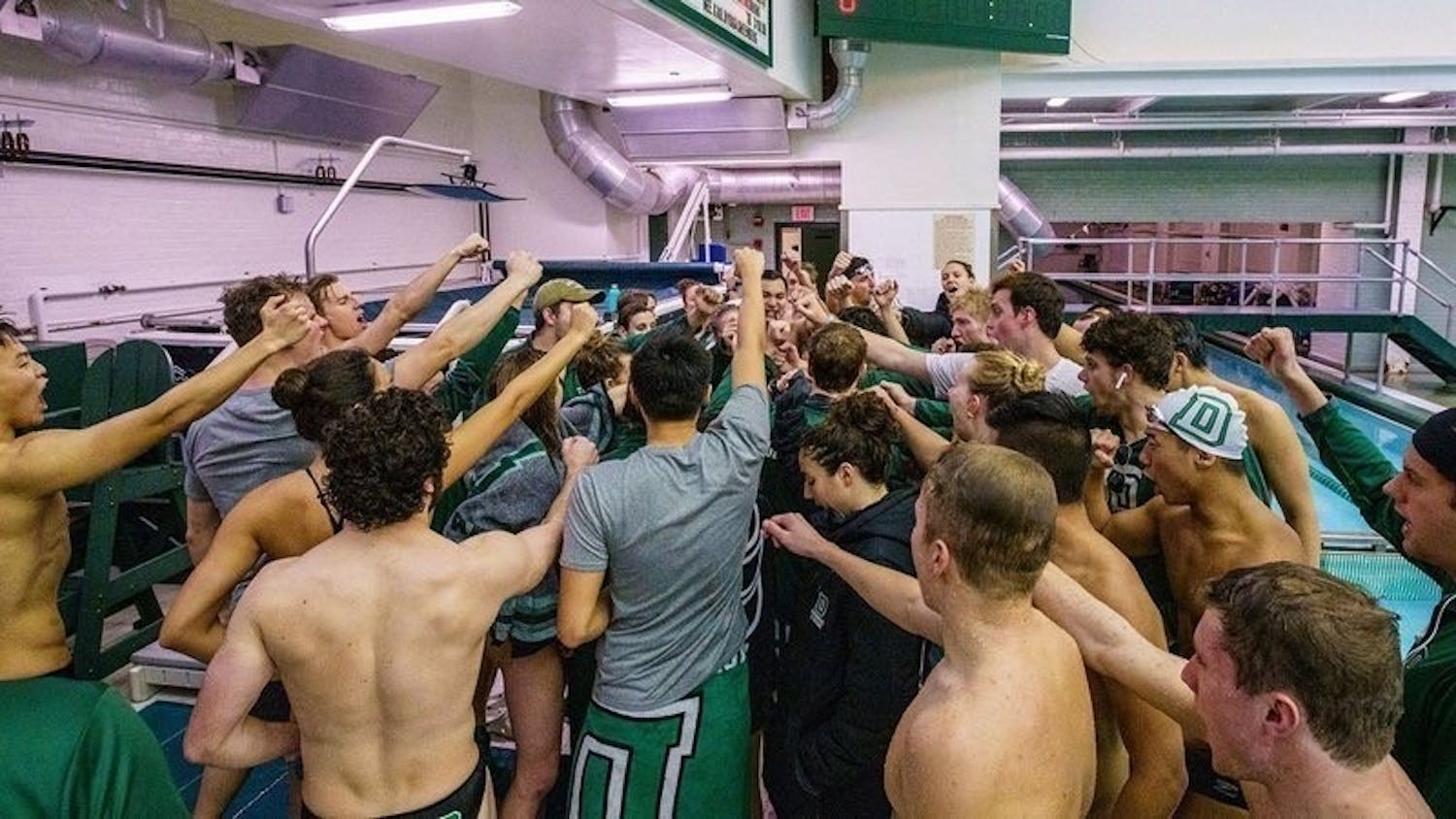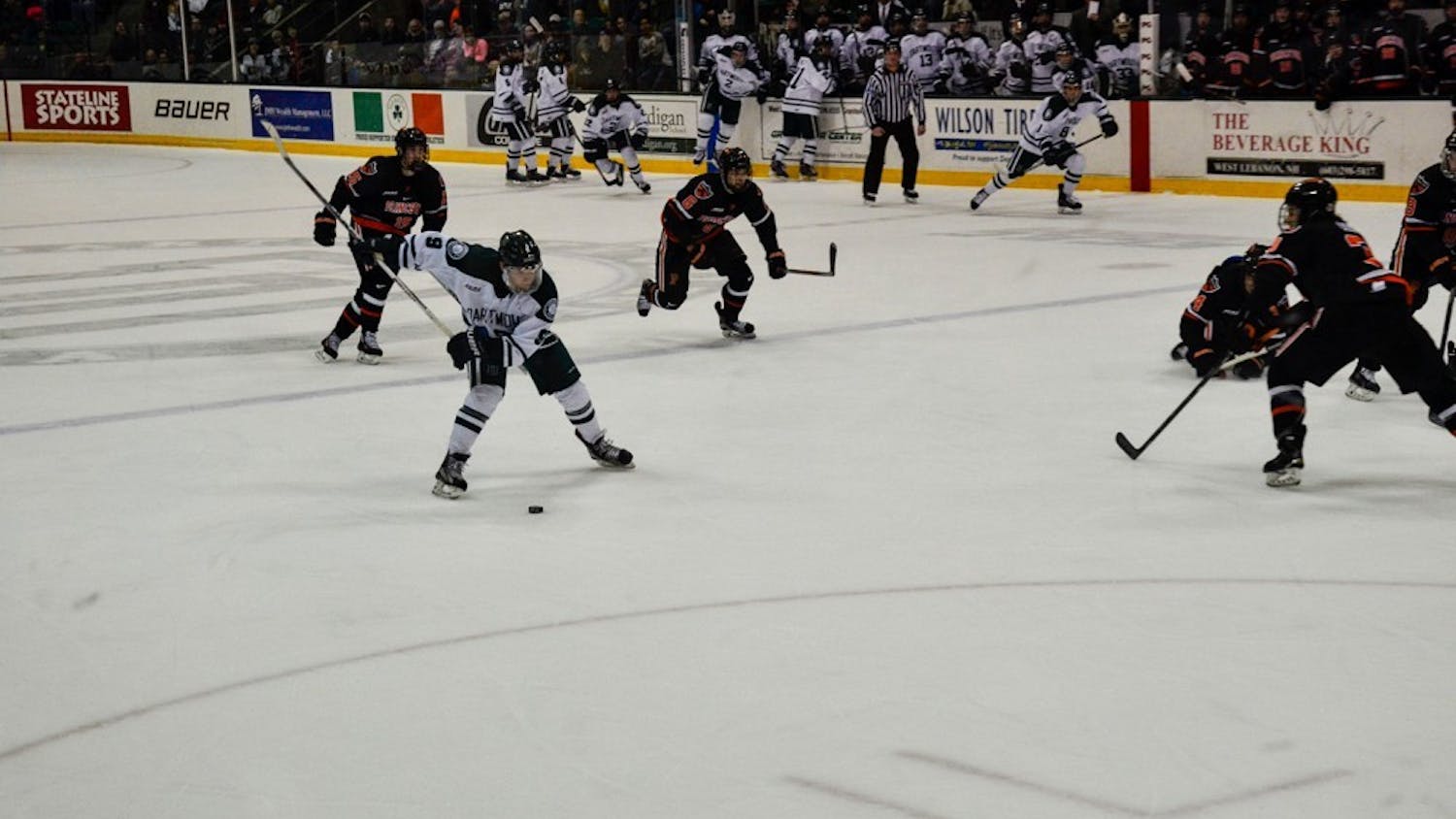Last week, both the Ivy League and the Dartmouth administration made crucial announcements regarding the short- and long-term future of Dartmouth athletics. On Wednesday, the league announced the cancellation of all fall sports amid the COVID-19 pandemic. The next day, the College announced that five varsity sports — men’s and women’s golf, men’s lightweight rowing and men’s and women’s swimming and diving — would be eliminated.
The Dartmouth spoke with athletics director Harry Sheehy for an extended one-on-one interview on Monday. During the interview, Sheehy said that College President Phil Hanlon first notified him that he was considering reducing the number of student-athletes last fall due to admissions priorities. Even if the COVID-19 pandemic had not exacerbated the College’s institutional budget deficit, Dartmouth may still have gone through with the same decision to cut five varsity sports, Sheehy said. He added that alumni financial efforts to reverse the College’s decision will not lead to reinstatement, since these donations will not address Dartmouth’s goal of decreasing student-athlete admissions by 10 percent. No further cuts will be needed to meet this goal, Sheehy said.
In addition, Sheehy confirmed that the winter sports season will be delayed until at least Jan. 1, 2021 and that the possibility is open for fall sports to be played in the spring. He plans to advocate for an extra year of Ivy League eligibility for student-athletes affected by pandemic cancellations who are accepted into graduate programs.
For clarity purposes, the interview has been reordered into three main sections. The first section focuses on topics related to the decision-making process in the College’s elimination of five varsity athletic programs. The second section addresses the widespread pushback and concerns that have been brought up in response to Dartmouth’s decision. The final section discusses the Ivy League’s cancellation of fall sports.
Dartmouth cuts five teams
How and when did President Hanlon approach you about the need to reduce the number of recruited athletes by 10 percent?
HS: Phil and I first started talking about it around the middle of the fall, when he told me he was thinking about it. At some point later on, he said, “Harry I do want to do this.” So I went to the senior leadership team in the department and said, “We gotta prepare for how we’re going to do this.” Our 35-team program fit right in the middle of the Ivy League, even though we had the smallest enrollment.
When COVID-19 happened and the budget problem happened, that was the perfect storm for athletics. We then had to make some incredibly hard decisions. Because of what President Hanlon desired to have us give back to the admissions process, even without the budget problem, we might very well be sitting here today having done the same thing. The budget problem simply exacerbated that it needed to be done.
I’ve had lots of questions — why not just cut 10 percent across the board? Dartmouth’s done that twice in the last two decades. There’s very little fat on the athletic bone in terms of budget. So now, if you do that, you’re going to have teams that can’t travel as many times as they desire. You’re going to have teams that can’t schedule games outside the Northeast. You’re going to have all kinds of impacts on recruiting, on how we treat the young men and women while they’re here.
Some people will look at this and go, “Jeez, it’s just one kid a year per team. Or two kids a year.” That’s not the way to look at it. The way to look at it is this is a four-year impact. So at the end of the year, we have between four and eight and 12 less qualified, talented student-athletes on our rosters to compete against teams in our league that have not given that up.
It was an incredibly difficult situation, and so it’s why we ended up where we ended up.
When did it become clear that eliminating these sports would be the College’s course of action? What was the reason for announcing the decision when you did?
HS: There are always going to be issues around it that make it less than perfect in terms of timing. In terms of the timing coming the day after the fall sports announcement, we had already scheduled ours, and at that point, we felt it was critical for our coaches and students to know. The decision became very clear to us probably in the last month, of the course of action that we needed to take.
Did you consult with the coaches or players on the decision to cut the sports? If not, why not?
HS: No, you can’t do that procedurally. I know it sounds like the right thing to do, but, then, what happens is all the response we got just moves up a month, and you start getting people who lobby at that point. If you look across the country — we’re not the first — we’re not the tenth school to announce cuts in sports. No school will run a procedure where they will go and vet it to coaches and players. We vetted it privately to the athletics advisory board, to the president’s senior leadership team, to my senior leadership team, but we knew the decision wasn’t going to be welcomed. Anyone in athletic administration would say, if you did it early, in terms of letting coaches know, it just exacerbates the whole process. It seems kinder to do it the other way. It just isn’t doable.
Did you consult with the rest of the Ivy League?
HS: We did let them know, but we didn’t let them know until right before because in this age, it’ll be on Twitter before we even tell the athletes. We decided we were going to let them know right before our colleagues, and I gave the league the heads up the day before because I could trust that no leaks would come out of there.
The only one that I talked to personally was the Brown AD, but I will tell you that I know the discussions are going on at other campuses for sure. And I think when Brown and Dartmouth act, you can’t stop those conversations on other campuses. They’re going to happen.
It’s kind of a domino effect.
HS: Yeah, it is, unfortunately. That’s the way it works. I think, when the Ivy League acts on something, that can embolden a whole different group of schools to think about what they’re going to do. As tough as the world is for Dartmouth’s budgets, we’re not nearly as in bad shape as most of the world. A lot of schools’ athletic departments rely much more than we do on revenue generation.
Were any other plans considered before making the decision to cut the teams?
HS: We looked at the 10 percent cut in admissions slots across the board and saw what it would do to our programs. Let’s say we decided, “Okay, we’re going to emphasize these 16 teams, and we’re going to deemphasize these 16 teams.” You take all the admissions impact and you put it against 16 teams that you’ve decided are not as important. Now you’ve created a lack of ability to recruit and retain talented coaches, which will then limit recruitment of talented student-athletes. It’s a vicious circle. Basically, half your program would then be Division III. And then the student-athlete experience goes right down the tubes.
Why did the College cut entire sports teams, rather than just decrease the number of recruits and up the number of walk-ons? Golf, for example, only has two recruitment spots. How does removing the golf team increase flexibility for admissions?
HS: Remember this: With two supported student-athletes a year over four years, that’s eight. That’s more athletes than play in a match. So, they didn’t actually need walk-ons. Let’s say that the teams we eliminated get no slots, no athletic support. Then, what you’ve done is what I just talked about — you’re a NESCAC team. There’s no sense that that would be a Division I student-athlete experience, and there’d be no chance of any relative competitive success. I’m just not willing to create that.
President Hanlon offered a series of athletic alternatives for varsity athletes whose sports were cut. Do you expect that students will pursue the opportunities he suggested?
HS: My heart says I’d love to see them get a Dartmouth degree, but frankly, I know what I would have done as a student-athlete. I would have looked for another opportunity, but not all of them will. To me — and this is just me, personally — having those other opportunities rings a little bit hollow.
Addressing community pushback
What has been the response to this point from members and alumni of the athletic programs that were eliminated?
HS: We’ve gotten a lot of emails. I will tell you this: There has not been one surprise in this. And I told President Hanlon what would happen. And I told the senior leadership team. Literally, there has not been one surprise. We knew the reaction would be negative.
Look, I get it. We’re taking away what I consider to be a potential transformational experience in terms of friendship, competition and growth. But we weren’t willing to create second-class citizens in our department that weren’t able to compete on an Ivy League level. That’s what would have happened to half our programs.
Could you discuss further why, if alumni come in with donations to provide significant funding to these teams, it would not be possible to keep them?
HS: First of all, I don’t think the alums have an understanding of what it would actually take. For example, in ’02-’03, when we eliminated swimming, the alumni stepped up to save the program, but they didn’t endow the program. So some of the articles have been wrong. They’ll say, "Well, the alumni stepped up to endow the team back in ’03." Well, they didn’t. What they gave was $2 million of current use money. That means the budget every year came out of that, and that was a spend-down account. It wasn’t spinning off any income because $2 million spins off about $80,000 a year. That doesn’t pay for anything. That number has to be five times bigger to be an endowment.
A lot of people wrote in and said, “With a $5 billion endowment, how could you possibly do this?” An incredibly high percentage of our endowment are restricted funds. It’s not like our $5 billion spins off $250 million that the College can spend any way it wants. That’s not how endowments work. People give money to endow things with an expressed purpose. For example, a lot of our coaching positions are endowed. That’s what that money is used for. It can’t go to pay travel. It can’t go to pay for equipment. It has to go for the expressed purpose of the endowment. When you endow financial aid, you can’t take that money and spend it on our athletics. The endowment argument is a little bit specious because I just don’t think people understand how endowments work.
What would have been necessary for alumni to come in and save these programs?
HS: I think the amount donated has to be much higher, number one. But, number two, no matter how much money the alums give, it doesn’t solve our admissions problem. No matter what they give, that 10 percent reduction in admissions slots is still there. And so we would still have to do the same thing if we wanted to maintain a competitive, Division I, Ivy League student-athlete experience. There’s the crux of the decision.
The financial challenges are real. The whole institution is going to face those. We’re not the only ones being asked to give back millions of dollars. It’s happening all across our campus as President Hanlon tries to create a stable future for Dartmouth College financially. What the other places don’t have to do is give back the ability to support certain people in admissions, which we have.
Dartmouth says that the money saved is going to help alleviate its $150 million budget deficit as a result of the virus. Between the closing of Hanover Country Club, the cutting of these teams and the administrative restructuring, they are only saving $2 million. Was there any free money elsewhere?
HS: Other people are going to give back larger numbers than I give back. What I responded to was the charge I was handed, which is, “Harry, here’s how much we need from athletics.” Our budget in athletics is approximately $25 million, of which less than half comes from the College. The rest is endowment and annual giving by alums. That’s how every Ivy League school runs their athletic program — a combination of College subvention, annual giving and endowment. The percentages might vary at our schools, but that’s how they all do it. So, when you look at us, when we’re getting approximately $10 million from the College, $2 million is a big number.
It isn’t like the College has, in its budget line for athletics, $25 million written in. That’s not what it is. When we cut 11, 12, 13 percent off of the College subvention, that’s a huge impact. Because we still have to go out and raise that other money.
The FAQ said “there are no plans for any further reductions” in Dartmouth athletic programs. How certain are you that there won’t need be further reductions in the number of varsity programs?
HS: I’m positive of it. I feel very strongly that Phil and I worked this through. He was involved in my planning the whole way. He’s comfortable with the size of our program as it will exist after these team eliminations. One thing we wanted to do was make sure the rest of our coaches knew and our student-athletes knew that the axe isn’t hanging over anybody’s head. Now, I’m an AD, Hanlon is the president, we’ll be gone at some point. I can’t speak for the next administration. I can just speak for this one.
Anything else to note?
HS: I just think that it’s an extraordinarily difficult time, and I know that the young men and women who competed for us in those five teams think it’s cold and heartless and cruel, and in many aspects of that, it’s true.
I understand. I was a student-athlete. I know that if we’re going to maintain a vibrant, competitive, Division I student-athlete experience, we’re not going to be able to do it with budgets and resources for admissions being reduced at the level that we’ve been asked to.
I made the tough decision, I was helped by the senior leadership team, and President Hanlon looked at it and supported it, but it doesn’t mean that I enjoyed one ounce of it because I know how it impacts people. I’ve been around this business for a long time, and believe me, nobody puts their head in their pillow at night as an Athletic Director and says, "I can’t wait to wake up tomorrow and eliminate five teams."
You can argue with us about what teams. That would be a debate. I don’t think you can debate that that’s what we needed to do at this point in our history in order to maintain a program.
Ivy League cancels fall sports
Could you elaborate on the factors that went into Wednesday’s decision to cancel all fall Ivy League sports?
HS: I think the factors that went into that were basically that there’s a number of different school policies around the league in terms of how they’re going to determine who comes back and how many come back. And I think it became obvious to the presidents that with such a difference, it was going to be impossible to work out sports this fall. Those policies and the spike that’s going on in our country with the virus made it a fairly easy and common sense decision for the presidents.
What was the timeline of this decision? How did the school reopening policies influence the decision to cancel fall sports?
HS: Both were figured out at the same time. As athletic directors, we have been providing the presidents with lots of information in terms of the logistics of trying to open up a campus for athletic competition.
When you talk about coming back to campus and having travel banned, then how do you okay a group of students getting on a bus at Princeton and coming here to Dartmouth, or vice versa? I think that they operated in parallel. We provided information. The presidents spent a good bit of time on it. I don’t think this was a casual decision at all.
The Ivy League was on an island for a while when we made our decision on the men’s and women’s basketball tournaments, but we weren’t on an island very long. And I think you’ll find the same thing happening here. I think you’re going to find a good number of leagues around the country decide that they’re going to go the same way with this.
For the decision about canceling fall sports, what other plans were considered by the league?
HS: I think we’re a little bit prisoner to campus policy on this. There was some thought early on that certain teams could compete with very little danger, while others — as you know, you can’t socially distance in football. But it gets so complicated when you think about how we handle our facilities. How do we handle locker rooms? How do we handle the weight room? I would tell you this. I certainly wasn’t shocked by the decision, nor were my colleagues around the league.
Some sources, including CBS and The New York Times, have reported that no Ivy League sports will be played until Jan 1. 2021 at the earliest. Could you clarify whether the start of winter sports will officially be delayed?
HS: The start of some winter sports are going to be delayed. The presidents have decided there won’t be any competition until approximately Jan. 1, 2021. I actually applaud the presidents for delaying that decision because I think if they were forced to make a decision now, they’d probably have to do the same thing with winter sports that they did with fall sports.
How much are athletes for fall and winter sports allowed to practice this fall?
HS: That’s still up in the air. It looks like it’s going to be 12 hours a week. It will be restricted in a way because there’s no competition — we don’t need 20 hours during the week — but we want to help our young men and women get better, so we want them to be able to train.
Could you clarify what the Ivy League had said about eligibility for fall sports athletes as far as a fifth year? Can they play a fifth year as graduate students?
HS: Right now, that’s illegal in the Ivy League. When this happened last spring, I asked the league to consider waiving that for a year because I think it was so unfortunate with what happened to our spring kids, that if we had young men and women who were qualified to get in the Master of Arts in Liberal Studies program, for example, why not let them do it for a year? But the league voted it down, and the presidents voted it down. Their whole thing is, philosophically, Ivy League sports are for undergraduates.
I thought that this was such an extraordinary circumstance that we should waive it for a year. Now, we’re in an even more extraordinary circumstance. So I believe we’re going to have to revisit that. And I would say that, in my original discussion with President Hanlon, he was not against that.
What I’m trying to get them to do is to say — this waiver I wanted last spring, let’s do it now, so that we don’t have Cha'Mia Rothwell ’20 running for Duke University, right? And Katie Bourque ’20 playing for the University of North Carolina or Duke. Those things don’t need to happen.
What is the likelihood of moving fall sports to the spring? Is that process underway? Would it just be football, or all fall sports?
HS: I think that every campus is going to have their own challenges in terms of staffing. For example, if we move our whole slate of fall sports to the spring, how does that impact our trainers, the sports medicine people, the equipment men? This is a very layered decision. On the surface, that sounds great. And if we can do that, I would love to give those young men and women a chance to compete in the spring because I do know this is a heavy price for our student-athletes to pay.
We just don’t know if that’s actually logistically possible yet. In talking with my colleagues around the league, there are a couple places that have told us, “There’s no way we can do it.” I’ve told our staff, “We’re not going to say that. We’re going to see if we can. Let’s figure it out if we can.” If we can’t, then we’ll have to say that at some point. But if we can, then I’d like to keep that possibility open.
This interview has been edited and condensed for clarity and length.
